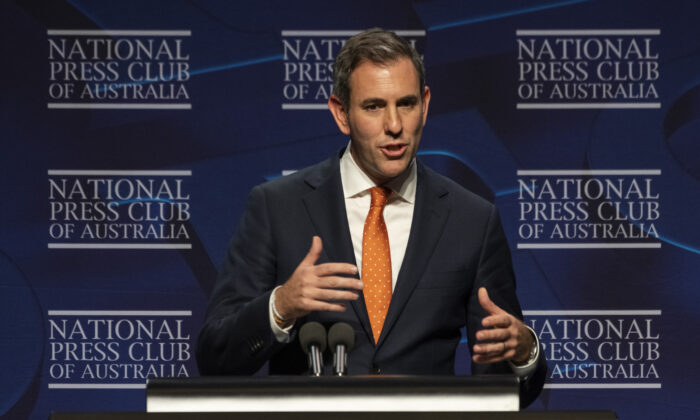Treasurer Aims to Boost Australia’s Productivity Through $900 Million Fund
Australian Treasurer Jim Chalmers is providing up to $900 million to states and territories to assist them in enhancing productivity growth.
Australia is aiming to boost its productivity with the introduction of a new $900 million fund, focusing on infrastructure development spearheaded by Treasurer Jim Chalmers.
The country’s productivity currently ranks in the middle among OECD nations, lagging behind countries like the Nordic states, France, and the United States, but ahead of the United Kingdom, Canada, New Zealand, and the OECD average.
Before the pandemic and during the former Coalition government’s tenure, productivity growth was at its slowest in 60 years, averaging just 1.1 percent annually. Although productivity showed marginal improvement under Labor, it has started to decline once again.
In 2022, Treasury revised its long-term growth forecast from 1.5 to 1.2 percent annually.
Treasurer Chalmers is eager to reverse this trend and has tasked the Productivity Commission with investigating the potential impact of reviving national competition policy. The Commission’s findings suggest that enhancing productivity could boost Australia’s annual GDP by up to $45 billion and reduce prices by 1.45 percentage points.
“That increase in GDP translates to approximately $5,000 per household per year,” remarked Chalmers at an Australian Business Economists event in Sydney on Nov. 13.
He shared that the forthcoming report, which highlights the considerable benefits of revitalizing national competition policy, is yet to be made public.
To incentivize the states and territories to drive this change, Chalmers has announced the establishment of a $900 million fund. This fund aims to expedite building approvals and enact other reforms to enhance productivity.
In addition to the $3.5 billion in performance bonuses offered to states for streamlining the construction of 1.2 million homes over five years, an extra $1.5 billion has been committed to state and local governments for infrastructure development in areas requiring new housing.
Chalmers explained, “The primary objective is to reward states with increased revenue when they implement economically impactful and measurable reforms.”
Other Incentives
Over the past two decades, productivity in Australian construction has declined. To counteract this, the treasurer anticipates an agreement on hastening the adoption of reputable international product safety standards and establishing a general “right to repair,” both led by the federal government.
States could also explore simplifying commercial planning and zoning, and removing obstacles to the adoption of modern construction methods like off-site fabrication, mass production, and factory assembly as alternatives to conventional building practices.
Chalmers highlighted that the analysis indicated that half of the deceleration in productivity growth stemmed from an increase in individuals working in service sectors, where productivity advances at a slower pace. He also noted the role of “weaker investment” in the lackluster productivity results.
Commission’s Report
The Productivity Commission’s 2017 report, “Shifting the Dial,” included 28 recommendations, with 22 falling under the sole or joint jurisdiction of the states. These recommendations proposed initiatives such as replacing property stamp duties with a land tax, replacing vehicle registration with road user charges, and enhancing efficiencies in health and education by reducing duplication.
While not all of the Commission’s recommendations will be adopted, Chalmers emphasized the focus on making significant progress where feasible.
He concluded, “There is no greater structural challenge in our economy than productivity, making it the top priority for reform.”



